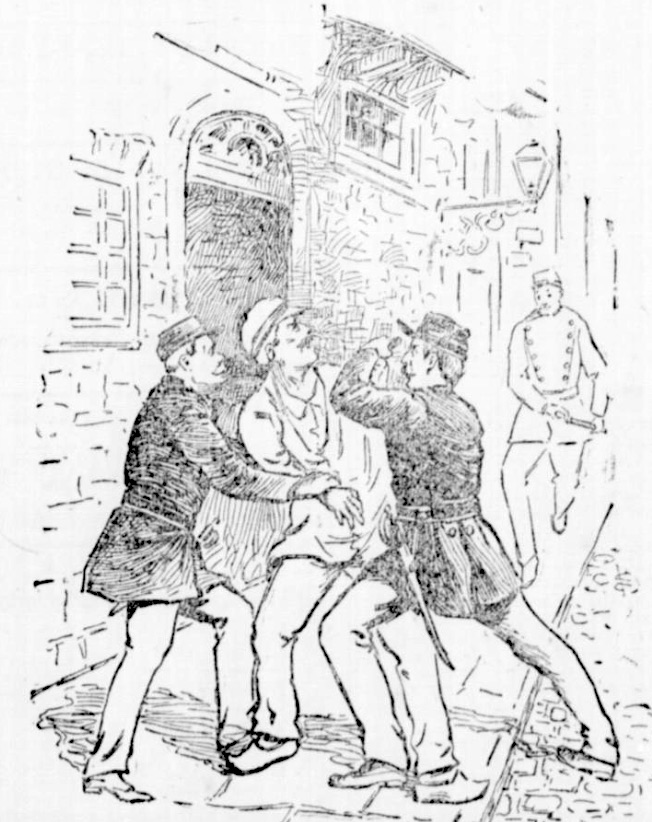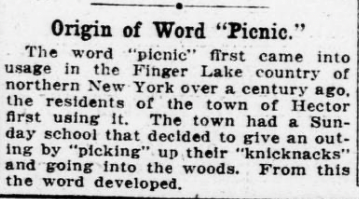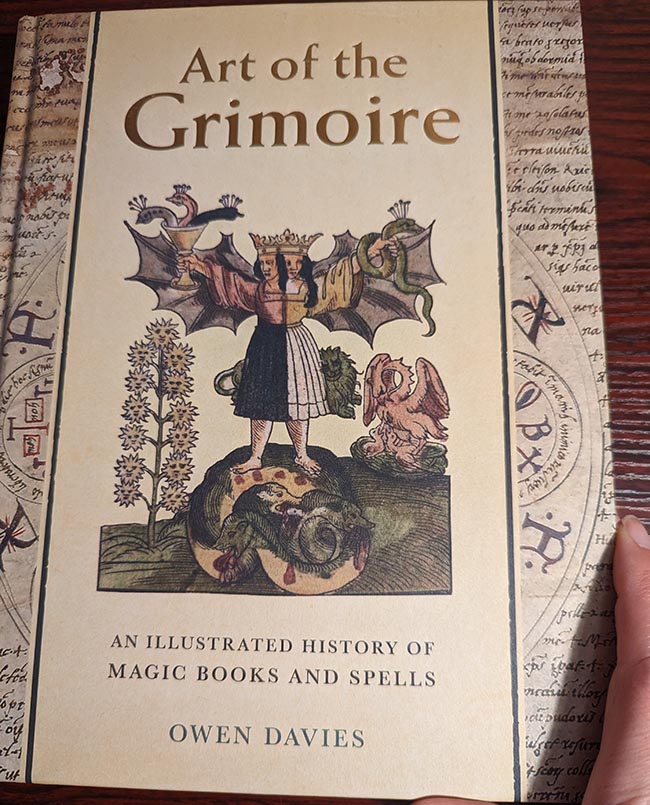
Crime in the 1900s was everywhere, including Paris. What makes this old newspaper article on Parisian crime so fascinating are the crime guilds it discusses as well as to the methods used by burglars – such as lassoing victims into alleys and robbing them of the items in their pockets.

POLICE UNABLE TO COPE WITH CARNIVAL OF CRIME
Streets of French Capital Practically Given Over to Organized Bands of Robbers and Murderers Who Laugh at the Authorities
Once more comes the news, astounding to all except such as are familiar with the corruption which exists among the police of that city, that Paris is terrorized by organized bands of footpads and burglars who do not hesitate to murder if they find the killing of human beings requisite for the success of their operations. Hardly a night passes but some unoffending citizen is set upon by thugs and as many as a dozen revolver, knife and sandbag attacks have been reported in one night. Recently a new method of assault has been introduced. A citizen walking hurriedly along a street on his way home from his place of business or entertainment hears the whirr of a lariat and before he has time to see whence it comes, finds himself lassoed and being dragged into some dark alley or doorway where thieves relieve him of whatever of value he has on his person. When he escapes — if he is fortunate enough not to be killed — he hurries to the police in the hope that an effort will be made to recover his property and punish his assailants. His complaint causes no surprise and arouses no official to action. Robbery is such a commonplace affair in Paris that the police do not deem it worth while tracing the offenders in any particular case, unless the graven offense of murder occurs also.
So bold are these Paris thugs that they band together and give themselves names, as secret societies have a habit of doing. The names and rendezvous are, many of them, well known to the police and no other reason for the failure to rid the French metropolis of them can be ascribed than collusion, with profit to the police in the shape of a division of the plunder. As their names differ, so do their purpose and methods. There are at least thirty of these guilds of crime and some of them wield considerable political influence.
As their name suggests the members of the “Habits Noirs” gang are well dressed and, for the greater part, they are also good looking. The term “Habits Noirs” means “evening dress.” They frequent the reading and smoking rooms of hotels as well as picture galleries and similar places of entertainment during the day, and cafe concerts at night, always dressed in the very height of fashion. They do not disdain the acquaintance of men, especially if they happen to be foreign visitors, and are only too ready to pilot them to haunts where they can be robbed in one fashion or another with impunity. Yet, as a general rule, they look to women as their legitimate prey. In one manner or another they manage to scrape an acquaintance with their victim, and once they have achieved this the rest is easy. For woe betide the woman who allows even a scrap of writing, a glove, a handkerchief or a card to fall into the hands of one of these adventurers. It is used at once for purposes of terrorism and of blackmail, and unless the woman has the good sense to immediately appeal for protection to some male relative there is no limit to the depth of the degradation to which she will be dragged. In the end she may be murdered.
Another notorious band operate in the Bois de Boulogne. The police supervision of that famous park is of the most inadequate character, and the result is that each clump of bushes, each copse of trees has become the hiding place of bandits of the most audacious description. To such as an extent is this the case that it has become positively dangerous for solitary promenaders to turn off into any of the less frequented side paths, and scarcely a day passes without one or more robberies being reported to the police.
The coarser thugs belong mostly to the Bande de Neuilly, a league whose members make night attacks upon belated citizens returning home through the streets that are badly lighted and little frequented. Their audacity remains almost incredible. They think nothing of attacking a policeman on his beat. In Neuilly and in other similarly infested quarters of Paris the patrolling is done by the police in couples, or even in parties of three. Marqueiot, the founder of this gang of thugs, ultimately met with his death on the scaffold for the murder of an old lady, and during the course of his trial the fact was brought to light that as chief of the Bande de Neuilly he had taken part in no less than seventy separate night assaults with robbery. His hideous society survived him. As a general rule its members content themselves with throttling, pounding and kicking their victims into insensibility. But if the persons thus assailed show fight or lead their assailants to believe for one moment that they have recognized them they will stab them, or beat in their skulls without the slightest hesitation, then drop their bodies over the parapet of the bridge at Neuilly into the swiftly flowing river.
There is no bridge in all Paris that has been the scene of so many murders of this kind as the bridge at Neuilly.
The Cour la Reine bandits are as formidable as the Bande de Neuilly, but are not so coarse. They haunt the fortification of the city, attacking only selected victims, who, after being plundered are thrown over the walls and killed. [Source]


